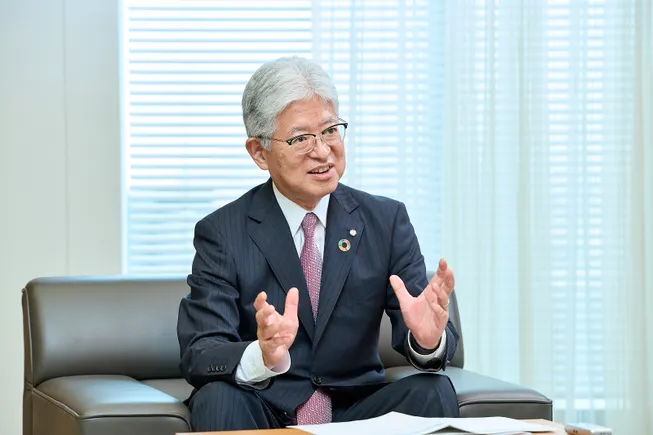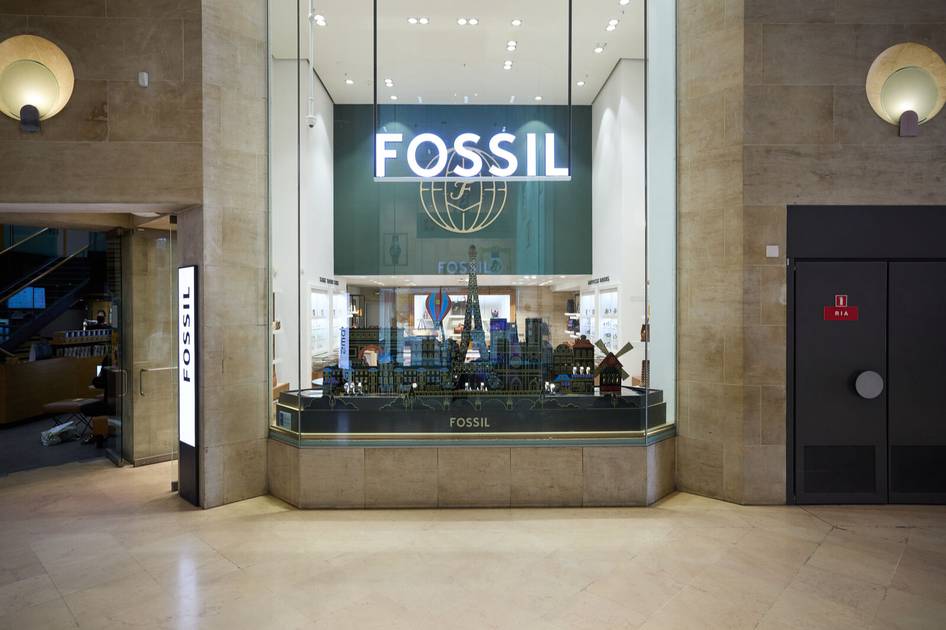In times of crisis, luxury brands turn to the new guard of designers
Jonathan Anderson Credits: ©Launchmetrics/spotlight. Matthieu Blazy at Chanel, Jonathan Anderson at Dior and Demna at Gucci: luxury’s leading brands turned to the creativity of relatively low-key designers in their forties to address the economic challenges facing the sector. Following months of speculation and his arrival at Dior Homme, forty-year-old Jonathan Anderson was appointed creative director of the brand's womenswear collections on Monday, replacing sixty-one-year-old Maria Grazia Chiuri. The Northern Irish designer became the first designer since Christian Dior to create the womenswear and menswear lines for LVMH’s flagship brand, as well as haute couture. After the appointment of forty-year-old French-Belgian Matthieu Blazy at Chanel in December 2024, this was the biggest event in the extensive reshuffle that had been stirring the fashion world for over a year, in response to the economic turbulence experienced by the luxury sector. Another shift within the Kering group was that of forty-four-year-old Georgian Demna, who spent ten years at Balenciaga, and was appointed head of Gucci in May 2024. After several lavish post-Covid years, the sector had been facing headwinds in its two main markets since 2024, with a recovery yet to materialise in China and the threat of increased customs duties in the US. At Dior, the second largest fashion brand in the LVMH group after Louis Vuitton, turnover reached 8.4 billion euros last year, with profits of 2.7 billion euros, but the brand experienced a “double-digit decline in the second half of the year”, according to HSBC bank. Chanel reported a 28.2 percent drop in net profit to 3.4 billion dollars last year, and a 5.3 percent drop in turnover to 18.7 billion dollars. Gucci's underperformance dragged down the Kering group, which saw its net profit collapse by 62 percent in 2024, with the Italian brand's sales falling by 23 percent to 7.65 billion euros. Forty-somethings to the rescue Relatively unknown to the general public, the forty-something designers tasked with reviving these powerful fashion houses had nevertheless proven their worth. “There is the idea of giving a kind of fresh impetus but with profiles who already have experience, a certain maturity, and whose objective is not so much to revolutionise as to have a coherent, authentic and strong message, which resonates both with the brand and with the evolution of consumers,” explained Serge Carreira, an affiliated professor at Sciences Po Paris and a specialist in the luxury industry, to AFP. Jonathan Anderson made the Spanish brand Loewe, during the eleven years he headed it until 2025, one of LVMH's greatest successes, not forgetting that of his own label JW Anderson. Among his flagship creations were stage outfits for Beyoncé and Rihanna. He also had a link with cinema, particularly with Italian director Luca Guadagnino, for whom he designed the costumes for ‘Challengers’, starring Zendaya, and ‘Queer’, starring Daniel Craig. More discreet, Matthieu Blazy contributed to the resurgence in popularity of Bottega Veneta (Kering group), where he was creative director from 2021 to 2024, giving a sense of movement and boldness to the Italian brand's signature woven leather. At Chanel, he would also be tasked with turning the page on Karl Lagerfeld. The Kaiser reigned over the brand for over three decades, until his death in 2019. His right-hand woman, sixty-three-year-old Virginie Viard, succeeded him before abruptly leaving her post in June 2024. Finally, Demna enabled Balenciaga to exceed one billion euros in turnover. His strengths: an iconoclastic style, from T-shirts to haute couture, his ability to make the 'ugly' desirable, from platform Crocs to bin bags, as well as his celebrity connections, from American influencer Kim Kardashian to French actress Isabelle Huppert. A success story, however, tarnished in 2022 by an advertising campaign featuring children with sado-masochistic-inspired accessories. The results were not long in coming: Jonathan Anderson opened the ball with Dior Homme on June 27 in Paris, while Demna and Matthieu Blazy made their debuts at the womenswear Fashion Weeks in Milan in September and Paris in October, respectively. (AFP) This article was translated to English using an AI tool. FashionUnited uses AI language tools to speed up translating (news) articles and proofread the translations to improve the end result. This saves our human journalists time they can spend doing research and writing original articles. Articles translated with the help of AI are checked and edited by a human desk editor prior to going online. If you have questions or comments about this process email us at info@fashionunited.com
Matthieu Blazy at Chanel, Jonathan Anderson at Dior and Demna at Gucci: luxury’s leading brands turned to the creativity of relatively low-key designers in their forties to address the economic challenges facing the sector.
Following months of speculation and his arrival at Dior Homme, forty-year-old Jonathan Anderson was appointed creative director of the brand's womenswear collections on Monday, replacing sixty-one-year-old Maria Grazia Chiuri.
The Northern Irish designer became the first designer since Christian Dior to create the womenswear and menswear lines for LVMH’s flagship brand, as well as haute couture.
After the appointment of forty-year-old French-Belgian Matthieu Blazy at Chanel in December 2024, this was the biggest event in the extensive reshuffle that had been stirring the fashion world for over a year, in response to the economic turbulence experienced by the luxury sector.
Another shift within the Kering group was that of forty-four-year-old Georgian Demna, who spent ten years at Balenciaga, and was appointed head of Gucci in May 2024.
After several lavish post-Covid years, the sector had been facing headwinds in its two main markets since 2024, with a recovery yet to materialise in China and the threat of increased customs duties in the US.
At Dior, the second largest fashion brand in the LVMH group after Louis Vuitton, turnover reached 8.4 billion euros last year, with profits of 2.7 billion euros, but the brand experienced a “double-digit decline in the second half of the year”, according to HSBC bank.
Chanel reported a 28.2 percent drop in net profit to 3.4 billion dollars last year, and a 5.3 percent drop in turnover to 18.7 billion dollars.
Gucci's underperformance dragged down the Kering group, which saw its net profit collapse by 62 percent in 2024, with the Italian brand's sales falling by 23 percent to 7.65 billion euros.
Forty-somethings to the rescue
Relatively unknown to the general public, the forty-something designers tasked with reviving these powerful fashion houses had nevertheless proven their worth.
“There is the idea of giving a kind of fresh impetus but with profiles who already have experience, a certain maturity, and whose objective is not so much to revolutionise as to have a coherent, authentic and strong message, which resonates both with the brand and with the evolution of consumers,” explained Serge Carreira, an affiliated professor at Sciences Po Paris and a specialist in the luxury industry, to AFP.
Jonathan Anderson made the Spanish brand Loewe, during the eleven years he headed it until 2025, one of LVMH's greatest successes, not forgetting that of his own label JW Anderson.
Among his flagship creations were stage outfits for Beyoncé and Rihanna. He also had a link with cinema, particularly with Italian director Luca Guadagnino, for whom he designed the costumes for ‘Challengers’, starring Zendaya, and ‘Queer’, starring Daniel Craig.
More discreet, Matthieu Blazy contributed to the resurgence in popularity of Bottega Veneta (Kering group), where he was creative director from 2021 to 2024, giving a sense of movement and boldness to the Italian brand's signature woven leather.
At Chanel, he would also be tasked with turning the page on Karl Lagerfeld. The Kaiser reigned over the brand for over three decades, until his death in 2019. His right-hand woman, sixty-three-year-old Virginie Viard, succeeded him before abruptly leaving her post in June 2024.
Finally, Demna enabled Balenciaga to exceed one billion euros in turnover.
His strengths: an iconoclastic style, from T-shirts to haute couture, his ability to make the 'ugly' desirable, from platform Crocs to bin bags, as well as his celebrity connections, from American influencer Kim Kardashian to French actress Isabelle Huppert.
A success story, however, tarnished in 2022 by an advertising campaign featuring children with sado-masochistic-inspired accessories.
The results were not long in coming: Jonathan Anderson opened the ball with Dior Homme on June 27 in Paris, while Demna and Matthieu Blazy made their debuts at the womenswear Fashion Weeks in Milan in September and Paris in October, respectively. (AFP)
FashionUnited uses AI language tools to speed up translating (news) articles and proofread the translations to improve the end result. This saves our human journalists time they can spend doing research and writing original articles. Articles translated with the help of AI are checked and edited by a human desk editor prior to going online. If you have questions or comments about this process email us at info@fashionunited.com
This article was translated to English using an AI tool.

















































































































































